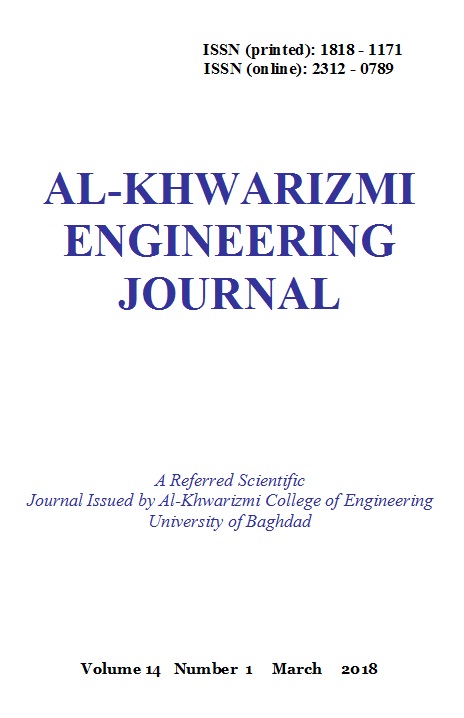Kinetic Study of the Leaching of Iraqi Akashat Phosphate Ore Using Lactic Acid
DOI:
https://doi.org/10.22153/kej.2018.08.006Abstract
In the present work, a kinetic study was performed to the extraction of phosphate from Iraqi Akashat phosphate ore using organic acid. Leaching was studied using lactic acid for the separation of calcareous materials (mainly calcite). Reaction conditions were 2% by weight acid concentration and 5ml/gm of acid volume to ore weight ratio. Reaction time was taken in the range 2 to 30 minutes (step 2 minutes) to determine the reaction rate constant k based on the change in calcite concentration. To determine value of activation energy when reaction temperature is varied from 25 to 65 , another investigation was accomplished. Through the kinetic data, it was found that selective leaching was controlled by surface chemical reaction. The study showed that the reaction kinetics was specifically described by the shrinking core model (SCM). Regression analyses gave values of activation energy (Ea) and Arrhenius constant (ko) as 40.108 KJ/mole and (2.256 103 sec-1) respectively.
Downloads
Downloads
Published
Issue
Section
License
Copyright: Open Access authors retain the copyrights of their papers, and all open access articles are distributed under the terms of the Creative Commons Attribution License, which permits unrestricted use, distribution, and reproduction in any medium, provided that the original work is properly cited. The use of general descriptive names, trade names, trademarks, and so forth in this publication, even if not specifically identified, does not imply that these names are not protected by the relevant laws and regulations. While the advice and information in this journal are believed to be true and accurate on the date of its going to press, neither the authors, the editors, nor the publisher can accept any legal responsibility for any errors or omissions that may be made. The publisher makes no warranty, express or implied, with respect to the material contained herein.
















